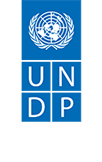The Response > Port Biological Baseline Surveys
The aim of PBBS is to provide inventories of marine life in and around commercial ports frequented by ships carrying ballast water. The underlying reason for these surveys is to determine the presence, abundance and distribution of non-indigenous species (NIS) which may have been introduced by shipping, either in ballast water or attached to hulls, as well as by other vectors. They can also provide a baseline of biological data against which future changes in the structure and function of marine communities can be measured.
Under Article 6 of the BWM Convention, States are encouraged to undertake scientific and technical research and monitoring including “observation, measurement, sampling, evaluation and analysis of the effectiveness and adverse impacts of any technology or methodology as well as adverse impacts caused by such organisms that have been identified to have been transferred through ships’ ballast water”.
This clearly recognizes the need for biological information on coastal and inland waters frequented by shipping in order to assess historical exposure to non-indigenous species introductions, to detect impacts on native species and communities exposed to such introductions, and to monitor change over time. Where large areas are lacking biological records, it would clearly be appropriate to record the most commonly-occurring plants and animals present in a manner that allows for updating of these records following future monitoring activities.
Whereas few countries have established long-term monitoring programmes specifically to identify NIS and species that may be invasive, such information is a crucial component of risk assessment for ballast water and NIS management. Although port surveys are not a specific requirement under the BWM Convention, risk-based approaches are central to ballast water management. It is therefore appropriate that countries take steps to improve their information base on NIS, and where possible carry out PBBS in their major commercial ports. The biological records obtained by PBBS, and in particular records of NIS, are of immense value as part of a global archive that can assist other countries and regions with risk assessments that are central to BWM.
In 1996 the Australian Centre for Research on Introduced Marine Pests (CRIMP) developed standard protocols for generalized biological surveys of non-indigenous and native species in shipping ports. These have been implemented in more than 34 Australian ports since 1996 and have been adopted and/or adapted for use by a variety of other countries. The protocols were revised and republished in 2001 (Hewitt and Martin 2001).
GloBallast selected the CRIMP Protocols for application at its six Demonstration Sites in Brazil, China, South Africa, India, Ukraine and Iran, on a trial basis. In 2001, the New Zealand government implemented a national series of PBBS and targeted surveillance for marine pests in more than 25 ports throughout New Zealand. The PBBS were based on the CRIMP protocols and utilized similar methods and approaches to the Australian port surveys. As part of this programme, the National Institute of Water and Atmospheric Research Ltd (NIWA) undertook more than 90 marine pest surveys, including 39 PBBS, on behalf of MAF-Biosecurity New Zealand.
PBBS can be logistically complex. They require good systems for sample collection, specimen handling, identification and analysis. Proper and adequate taxonomic expertise is required for identification of samples to species-level. As ports are hazardous environments, field work needs to be designed with safety in mind. Reporting mechanisms need to be well developed, so that if scientific teams detect a new introduction, management agencies are alerted in a timely manner.
GloBallast has issued a new Monograph 22: Guidance on Port Biological Baseline Surveys (PBBS), published in collaboration with IOI, CSIR-NIO and IUCN, to assist those planning PBBS for the first time by outlining the key elements of survey design as well as the more important activities and considerations both in the field and the laboratory.



